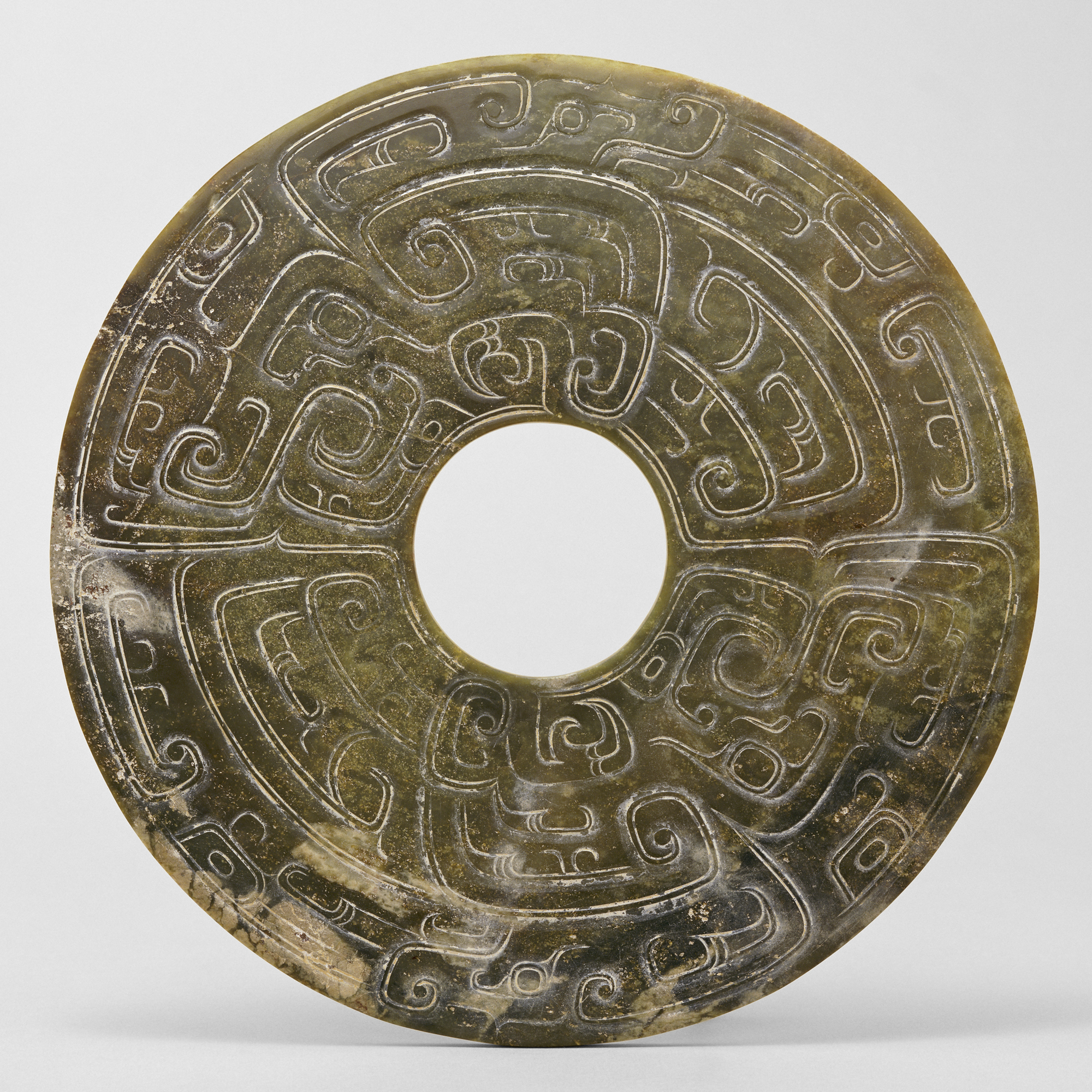Object of the Week: Disc with dragon motif

From some of the first recorded dragons found in Mesopotamian art, to the dragons found snarling onscreen and in books, numerous cultures have fostered their own myths and beliefs about dragons. Still, most of the dragons we encounter today are the fearsome fire-breathing creatures of the European tradition who lay waste to cities and hoard mounds of gold.
In Chinese culture, however, the dragon is highly revered and a symbol of good fortune. Originally associated with the stars and constellations that appear in the spring, dragons began to represent the seasons of rain and the coming of summer.1 Instead of bringing fire and destruction, Chinese dragons brought rain for crops and livestock.
In many areas of China, the dragon symbolizes harmony and prosperity. The number nine has long been associated with heaven and dragons have often been described in nines—leading to this number being deemed particularly auspicious. Later, dragons even began to be equated to the imperial throne and the reigning emperor through architecture and garments.
Far more sinuous and twisting than their Western European counterparts, Chinese dragons had bird-like wings with long plumes and whiskers. In this jade disc from the 8th century B.C., two dragons intertwine and almost chase each other across the mossy green stone. Each deeply abstracted line flows through one another. If one looks close enough, one can glimpse the dragon’s long coiling snout, the orb-like eye, and the curving jaw. Tangled with their bodies and tails, these two creatures’ plumes function as the outer ring of the disk.
These stone rings, or bi disks, were often carved with sky imagery and buried with the dead. There, dragons signified heaven, harmony, and balance within the natural order of life.2 Rather than functioning as harbingers of doom and destruction, the dragon in Chinese culture and mythology continues to be a symbol of luck and prosperity, hoping to bring balance to many.
– Emma Ming Wahl, SAM Curatorial Intern
1 Wilson, J. Keith. “Powerful Form and Potent Symbol: The Dragon in Asia.” The Bulletin of the Cleveland Museum of Art 77, no. 8 (1990): 286-323. http://www.jstor.org/stable/25161297.
2 Lopes, Rui Oliveira. “Securing the Harmony between the High and the Low: Power Animals and Symbols of Political Authority in Ancient Chinese Jades and Bronzes.” Asian Perspectives 53, no. 2 (2014): 195-225. http://www.jstor.org/stable/24569921.
Image: Disc with dragon motif, 10th – 8th century B.C., Chinese, Nephrite, Diameter: 9 5/8 in., Eugene Fuller Memorial Collection, 39.11.